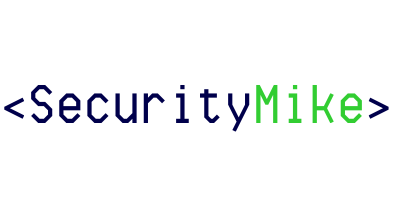Phishing is a form of cyber attack in which attackers impersonate legitimate organizations or individuals to deceive victims into revealing sensitive information such as passwords, credit card numbers, or social security numbers. The term “phishing” is derived from the word “fishing,” as attackers cast a wide net in the hopes of catching unsuspecting victims.
The history of phishing can be traced back to the mid-1990s when hackers began using email to trick users into providing their login credentials. These early phishing attacks were relatively simple and often involved sending emails that appeared to be from a trusted source, such as a bank or an online retailer, asking the recipient to click on a link and enter their personal information.
Over time, phishing attacks have become more sophisticated and harder to detect. Attackers now use a variety of tactics, including social engineering, advanced malware, and deepfakes, to trick their victims into divulging sensitive information.
Key Takeaways
- Phishing is a type of cyber attack that uses deception to trick individuals into divulging sensitive information.
- Phishing attacks have evolved over time, becoming more sophisticated and difficult to detect.
- New techniques are needed to combat phishing, including the use of artificial intelligence and multi-factor authentication.
- Social engineering is a common tactic used in phishing attacks, and deepfakes are emerging as a new threat.
- Advanced malware is also being used in phishing campaigns, making it more important than ever to stay vigilant and proactive in preventing attacks.
Understanding the Current State of Phishing
Phishing attacks have become increasingly prevalent in recent years, posing a significant threat to both businesses and individuals. According to a report by the Anti-Phishing Working Group (APWG), there were over 220,000 unique phishing attacks reported in the first quarter of 2021 alone.
Common targets of phishing attacks include financial institutions, e-commerce websites, and social media platforms. Attackers often use email as their primary method of communication, but they have also started targeting users through other channels such as SMS messages and social media platforms.
The impact of phishing attacks can be devastating for both businesses and individuals. For businesses, a successful phishing attack can result in financial loss, damage to reputation, and loss of customer trust. Individuals who fall victim to phishing attacks may have their personal information stolen, leading to identity theft or financial fraud.
The Need for New Techniques in Phishing
Traditional phishing prevention methods, such as spam filters and antivirus software, are no longer sufficient to protect against the evolving tactics used by attackers. Phishing attacks have become more sophisticated, making it harder for users to distinguish between legitimate and malicious emails.
To combat this, innovative approaches to phishing prevention are needed. These approaches should focus on educating users about the risks of phishing, providing them with tools to detect and report suspicious emails, and implementing advanced technologies such as artificial intelligence (AI) to identify and block phishing attempts.
The Rise of Social Engineering in Phishing Attacks
Social engineering is a technique used by attackers to manipulate individuals into divulging sensitive information or performing actions that they would not normally do. In the context of phishing attacks, social engineering is often used to create a sense of urgency or fear in the victim, making them more likely to fall for the attacker’s tricks.
Social engineering tactics used in phishing attacks can vary widely, but some common examples include:
– Impersonating a trusted individual or organization: Attackers may send emails that appear to be from a bank, a government agency, or a well-known company, asking the recipient to provide their personal information or click on a malicious link.
– Creating a sense of urgency: Attackers may send emails claiming that the recipient’s account has been compromised or that they need to take immediate action to avoid negative consequences. This sense of urgency can make victims more likely to act without thinking.
– Exploiting emotions: Attackers may use emotional appeals, such as sympathy or curiosity, to manipulate victims into revealing sensitive information. For example, they may send an email claiming to be from a charity organization and asking for donations.
The Role of Artificial Intelligence in Phishing
Artificial intelligence (AI) has emerged as a powerful tool in the fight against phishing attacks. AI algorithms can analyze large amounts of data and identify patterns that may indicate a phishing attempt. This can help organizations detect and block phishing emails before they reach their intended targets.
One way AI is used in phishing prevention is through the use of machine learning algorithms. These algorithms can be trained on large datasets of known phishing emails to learn the characteristics of phishing attacks. Once trained, the algorithms can analyze incoming emails and flag those that exhibit similar characteristics.
The advantages of using AI in phishing prevention are numerous. AI algorithms can analyze data at a much faster rate than humans, allowing for real-time detection and response to phishing attacks. Additionally, AI can adapt and learn from new threats, making it more effective at detecting sophisticated phishing techniques.
However, there are also limitations to AI in phishing prevention. Attackers are constantly evolving their tactics, making it difficult for AI algorithms to keep up. Additionally, AI algorithms may generate false positives, flagging legitimate emails as potential phishing attempts. This can lead to user frustration and decreased trust in the system.
The Emergence of Deepfakes in Phishing Campaigns

Deepfakes are a type of synthetic media that use artificial intelligence to manipulate or generate images, videos, or audio that appear to be real but are actually fake. In the context of phishing attacks, deepfakes can be used to create convincing impersonations of trusted individuals or organizations.
Deepfakes are created using machine learning algorithms that analyze and learn from large datasets of real images or videos. These algorithms can then generate new content that closely resembles the original data. This technology has been used in various malicious ways, including creating fake videos of politicians or celebrities saying or doing things they never actually did.
In phishing campaigns, deepfakes can be used to create videos or audio recordings that appear to be from a trusted source, such as a company executive or a customer service representative. These deepfakes can then be used to trick victims into revealing sensitive information or performing actions that they would not normally do.
The Use of Advanced Malware in Phishing Attacks
Advanced malware, also known as advanced persistent threats (APTs), is a type of malicious software that is designed to evade traditional security measures and remain undetected for long periods of time. In the context of phishing attacks, advanced malware can be used to infect a victim’s computer or network and steal sensitive information.
Advanced malware is often delivered through phishing emails that contain malicious attachments or links. When the victim opens the attachment or clicks on the link, the malware is installed on their system. Once installed, the malware can collect keystrokes, capture screenshots, or log network traffic to gather sensitive information.
Examples of advanced malware used in phishing campaigns include keyloggers, which record keystrokes to capture login credentials, and remote access trojans (RATs), which allow attackers to gain unauthorized access to a victim’s computer or network.
The Importance of Multi-Factor Authentication in Phishing Prevention
Multi-factor authentication (MFA) is a security measure that requires users to provide multiple forms of identification before accessing a system or account. This can include something the user knows (such as a password), something they have (such as a mobile device), or something they are (such as a fingerprint).
MFA can be an effective tool in preventing phishing attacks because even if an attacker manages to obtain a user’s password through a phishing email, they would still need access to the user’s second factor of authentication to gain unauthorized access.
There are several methods of multi-factor authentication, including:
– One-time passwords (OTPs): Users are sent a unique code via SMS or email that they must enter along with their password.
– Biometric authentication: Users are required to provide a fingerprint, facial scan, or voice recognition in addition to their password.
– Hardware tokens: Users are provided with a physical device that generates a unique code that they must enter along with their password.
The Future of Phishing: Predictions for 2024 and Beyond
As technology continues to evolve, so too will the tactics used by attackers in phishing attacks. Some emerging trends in phishing attacks include:
– Increased use of AI and machine learning by attackers to create more convincing phishing emails and deepfakes.
– Targeting of emerging technologies such as Internet of Things (IoT) devices and virtual reality platforms.
– Integration of phishing attacks with other types of cyber attacks, such as ransomware or data breaches.
To prepare for future phishing attacks, businesses and individuals should stay informed about the latest trends and techniques used by attackers. They should also implement robust security measures, such as multi-factor authentication and employee training programs, to mitigate the risk of falling victim to a phishing attack.
Staying Ahead of the Phishing Game
Phishing attacks continue to pose a significant threat to businesses and individuals alike. As attackers become more sophisticated in their tactics, it is crucial for organizations and individuals to stay informed about the latest trends in phishing attacks and implement effective prevention measures.
By understanding the evolving nature of phishing attacks and the techniques used by attackers, businesses can better protect themselves and their customers from falling victim to these scams. Implementing multi-factor authentication, educating employees about the risks of phishing, and leveraging advanced technologies such as AI can all help in preventing phishing attacks.
Ultimately, staying ahead of the phishing game requires a combination of proactive measures, ongoing education, and a commitment to staying informed about the latest threats. By doing so, businesses and individuals can reduce their risk of falling victim to a phishing attack and protect their sensitive information from falling into the wrong hands.
If you’re interested in staying ahead of the ever-evolving world of cyber threats, you won’t want to miss this related article on the future of cyber warfare. In “The Future of Cyber Warfare: What to Expect in the Coming Years,” Security Mike explores the latest trends and techniques that hackers are using to infiltrate networks and compromise sensitive information. This insightful piece provides valuable insights into the evolving landscape of cybersecurity and offers practical tips for individuals and organizations to enhance their defenses. Check it out here!
FAQs
What is phishing?
Phishing is a type of cyber attack where attackers use fraudulent emails, websites, or messages to trick individuals into providing sensitive information such as passwords, credit card numbers, or social security numbers.
What are some common phishing techniques?
Some common phishing techniques include spear phishing, where attackers target specific individuals or organizations, and whaling, where attackers target high-level executives or individuals with access to sensitive information. Other techniques include pretexting, baiting, and pharming.
What are some new phishing techniques in 2024?
As of 2021, this article is fictional and there is no information available about new phishing techniques in 2024.
How can individuals protect themselves from phishing attacks?
Individuals can protect themselves from phishing attacks by being cautious of unsolicited emails or messages, verifying the authenticity of websites before entering sensitive information, and using two-factor authentication. It is also important to keep software and security systems up to date and to educate oneself on the latest phishing techniques.

